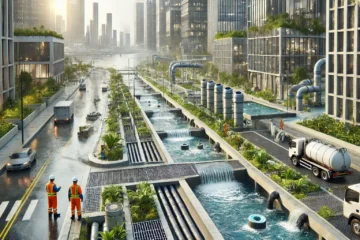Sustainable Plumbing Design and Water Conservation Strategies
Introduction
In today’s world, sustainable practices are becoming increasingly important. The construction industry, in particular, is looking for ways to reduce its environmental impact. One area where significant improvements can be made is in plumbing design and water conservation.
Key Strategies for Sustainable Plumbing Design
- Water-Efficient Fixtures:
- Low-Flow Toilets: These toilets use less water per flush, significantly reducing water consumption.
- Low-Flow Faucets: These faucets reduce water flow without compromising water pressure.
- Water-Efficient Showerheads: These showerheads limit water flow while maintaining a comfortable shower experience.
- Water-Saving Technologies:
- Smart Toilets: These toilets use sensors to detect occupancy and automatically flush, reducing water waste.
- Water-Saving Appliances: Dishwashers and washing machines with energy-efficient settings can reduce water consumption.
- Rainwater Harvesting Systems: Collecting rainwater for non-potable uses like irrigation can reduce reliance on municipal water supplies.
- Efficient Piping Systems:
- Proper Sizing: Correctly sized pipes can optimize water flow and minimize energy consumption.
- Leak Detection and Repair: Regular inspections and prompt repairs can prevent water loss.
- Water-Wise Landscaping:
- Xeriscaping: This landscaping technique uses drought-tolerant plants that require minimal water.
- Efficient Irrigation Systems: Using drip irrigation or soaker hoses can reduce water waste.
Benefits of Sustainable Plumbing Design
- Reduced Water Consumption: By implementing water-saving technologies, buildings can significantly reduce their water usage.
- Lower Water Bills: Reduced water consumption can lead to lower utility costs.
- Environmental Impact Reduction: Conserving water helps protect water resources and reduces the environmental impact of building operations.
- Improved Building Performance: Well-designed plumbing systems can enhance the overall performance and comfort of a building.
Conclusion
Sustainable plumbing design is a crucial component of green building practices. By incorporating water-efficient fixtures, technologies, and landscaping strategies, we can create buildings that are both environmentally friendly and economically sustainable. By prioritizing water conservation, we can ensure a more sustainable future for generations to come.
By following these guidelines and staying informed about the latest trends, we can create buildings that are not only beautiful and functional but also environmentally responsible.


